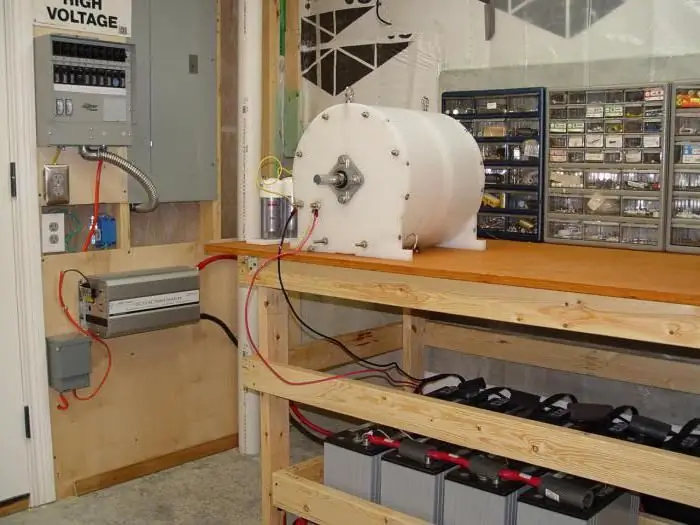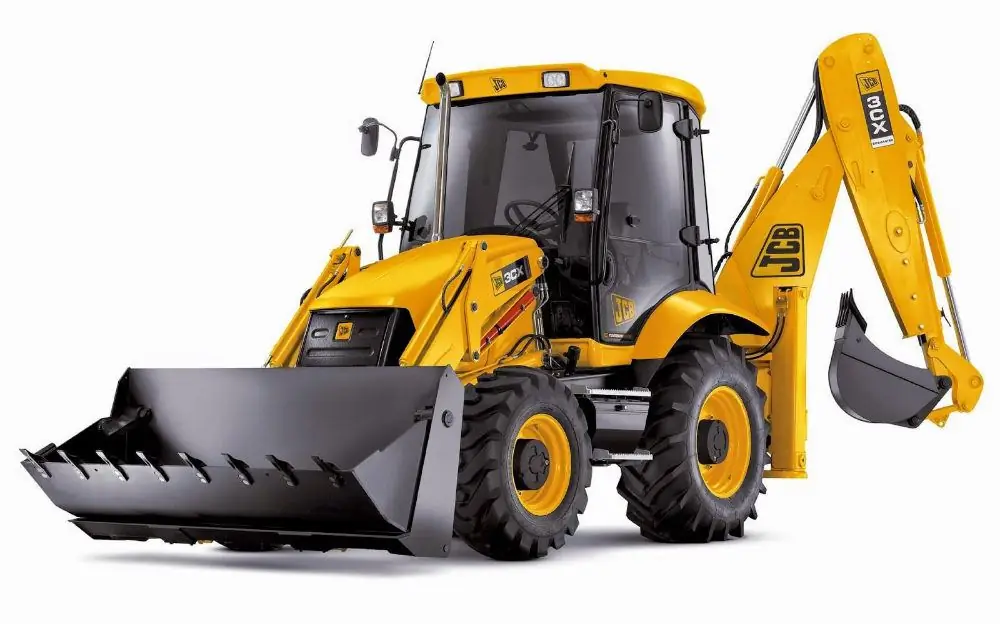2026 Author: Howard Calhoun | [email protected]. Last modified: 2025-01-24 13:10:30
Currently, people use a large number of the most diverse techniques. This type of equipment, like excavators, is now very popular. Since it significantly speeds up earthworks and not only. The classification of excavators is quite extensive and worth considering.
General information
Naturally, first of all, the classification is carried out depending on the power of the units, as well as their purpose. There are a number of machines that carry out all the necessary operations in order, and then repeat them at regular intervals. Such equipment belongs to discontinuous (cyclic) machines. The general classification of excavators includes another group of devices. But already continuous action. In turn, cyclic excavators are single-bucket, and continuous action - multi-bucket, scraper, milling.
Further it is worth noting that single-bucket and multi-bucket models can be both land-based and floating. The classification of excavators includes the division of land vehicles according to the method of their movement. So,allocate caterpillar, pneumatic, rail and walking machines.

Classification according to different criteria
As mentioned above, these vehicles may have a different running gear. In addition to those listed, it can also be a tractor, use a special or combined chassis, or an automobile move. As for the principle of operation, here the classification of excavators includes one more type, in addition to cyclic and continuous ones - these are vacuum and vacuum-suction. As for their operational purpose, in this case the division into classes is carried out as follows.
There is a group of machines for mining, that is, for working underground. There is a category of building universal units. In addition to these two types, the classification of excavators also includes quarry and overburden types.
At the moment, it is customary to distinguish several groups of this transport by their power unit. In this case, the excavators may have an internal combustion engine, usually of a diesel type, an electric motor, as well as steam engines. Although it is fair to say that the latter type has been used for a long time and is not actually used now.

Single-bucket models. What are they?
If we talk about the classification of single-bucket excavators, then we can distinguish several main features by which they are divided into different groups:
- Possibility of rotation of the working body around the supporting surface.
- By typeused chassis for movement.
- Type of power unit used.
- Mechanical transmission type (actuator for working body).
By itself, a shovel excavator is a cyclic earth-moving machine, which is intended for development, that is, digging, moving and loading soil. A movable bucket, which can have a different volume, acts as a working body for such units. It is fixed either on an arrow, or on a handle or ropes. The classification of single-bucket excavators is one of the most extensive, as they are the most common. They are widely used in the construction industry, as well as in mining.

Classification by turning method
In this case, the equipment can be full-turn or non-full-turn. In the first case, parts such as all working equipment, the driver's cab, the working body and the engine are mounted on a special turntable, which in turn is mounted on the chassis. Fastening takes place with the help of a special turntable or simply an OPU. The chassis gets the ability to rotate relative to this device in any direction and at any angle.
Since the purpose and classification of excavators are related, that is, the type of the selected machine depends on their purpose, in some cases it chooses a semi-rotary unit. In this case, the working equipment of the machine will be fixed to the chassis using a special rotary column. The column itself is attachedto special cross guides. This design allows you to move the column and the equipment installed on it left and right. At the same time, there is the possibility of subsequent fixation, so that it is convenient to position the bucket in the right place. For such excavators, the working body can rotate at an angle of 45-90 degrees from its original position.

Excavator on a tractor chassis
The first option - mounted on tractors. In this case, a tractor is used as the main chassis, usually a wheeled one. All excavator equipment is mounted on the back or side of the tractor (much less often). For this, the vehicle has a special frame. The most common model is working equipment mounted on a class 1, 4 tractor. Its bucket volume is from 0.2 to 0.5 m3.

Other types of chassis
In some cases, a truck can be used as the main chassis. Usually these are models with increased cross-country ability. They are characterized by a fairly high speed of movement, which distinguishes them from other models. Most often they are used in those areas where high mobility is required. It can be rescue operations, the military industry, sometimes during the construction of roads or during the cleaning of rubble.
Pneumatic excavators have their own special type of chassis, which is supported by wheels with pneumatic tires. Typically, such models belong to the full-turn class. The speed of movement on suchthe chassis is not more than 30 km / h, however, they are allowed to be towed by trucks at a speed of up to 40 km / h. As for bucket volumes, in this case, the range of indicators is quite wide from small (0.04 m3) to heavy models with a volume of 1.5 m3.
Crawler models are very common. Such machines have a specific chassis, which is made in the form of tracks and has a caterpillar mover. Such models are full-revolving, and also have high cross-country ability, thanks to a specific chassis. However, the speed of movement of such equipment is extremely low and is only 2-15 km/h. Usually, special tractors with trailers are used for their transportation. If we talk about the characteristics of the bucket, the range also starts from 0.04 m3 and can reach the volume of quarry equipment, that is, 10 m3..

In addition to the listed types, rail, floating or walking methods of movement are also used. Floating excavators are mounted on pontoons, railway excavators use the railway as a chassis. And the walkers have a special plate to which the paws used to move are attached.
Classification of bucket-wheel excavators
In this case, it is important to note several of the following groups. Firstly, the division into different groups is carried out depending on the direction of movement of the cutting edge of the bucket. On this basis, excavators of radial, transverse and longitudinal digging are distinguished. As in the case of single-bucket,multi-bucket are divided into groups according to the design of the working body, according to the type of chassis and other things.
Detailed description of different types of equipment
Classification of continuous excavators begins with the direction of movement of the cutting edge of their bucket.
If we talk about machines with longitudinal digging, then their movement of the cutting edge of their bucket will coincide with the direction of their movement. Usually only used for narrow trenches.
In units with a transverse digging type, the buckets move perpendicular to the movement of the machine itself. Usually used for digging pits during mining.

Radial digging excavators are very different from the first two types, since their bucket movement is due to the rotary rotation of the telescopic boom. In this case, it is worth saying that this category is divided into two more small subgroups, depending on the method of attaching the buckets to the boom. These can be chain or rotary models.
Separation according to other criteria
Classification of rotary excavators includes two types of machines. For the first group, the working elements will be placed along the rim of the rotor, for the second group - on the side surface of the rotor. In any case, the buckets will be fixed on a rigid rotor, and the soil can be unloaded both from the buckets themselves and with the help of a special conveyor.
For chain models, buckets are attached to an endless chain or chains. As for the shipment, it is carried out from the buckets themselves, and the shape of the guide chainwill set the dig profile.
As for the classification according to the type of chassis used, they can only be on caterpillar tracks or on pneumatic wheels. If we talk about the classification by drives, then the machines can be with a mechanical, hydraulic, electric or combined type.
Career Aggregate Models
The classification of mining excavators to this day remains relevant for study, since minerals are still predominantly mined in an open way, which means that such equipment remains in demand. By themselves, such machines differ from the rest in much larger dimensions and bucket sizes, as they are designed to work with huge volumes of soil.
- Ordinary mining excavator - ECG. In this case, it means that the equipment is mounted on tracks, and its bucket is mounted on a rope.
- Type of EG machine. As for the type of chassis, it is also caterpillar, however, instead of a rope, a hydraulic system is used here to raise the bucket.
- EGO - a mining excavator with a reverse shovel installed.
- EDG is the last type of career vehicle. A caterpillar type of chassis is used, and a dragline acts as a hinged working body.
Technological parameters
It is important to consider the classification of excavators and their technological characteristics, as this will directly affect the amount of work performed. Naturally, for the technology under study, the most important technological characteristic will be the volume of the bucket. For the largest, this figure canreach 50 m3. In addition, for example, for career models, the length of the arrow will play an important role. The higher this indicator, the deeper the career can be, and therefore, for some models, the length of the arrow reaches 55 meters.
Other key characteristics can be seen from career models.
Movement speed is important for some types. Career models move at a speed of 2.5 km / h and these are the fastest. Next, an important parameter will be the width of the tracks. For careers, the highest figure is 24 meters. The duty cycle affects the speed of all work, and therefore is quite important. The shortest cycle for mining shovels is 50 seconds. For urban models, an important indicator will be the pressure exerted on the ground. Mining excavators press on the ground with a force of up to 0.42 MPa.
As you can see, the topic is rather complicated. But you can still figure it out.
Recommended:
Classification of engines. Types of engines, their purpose, device and principle of operation

Nowadays, most vehicles are powered by an engine. The classification of this device is huge and includes a large number of different types of engines
Types of auctions, their classification, characteristics and conditions

What is an auction, what types of auctions exist. How to participate? What are the rules? Is it possible to refuse a purchase and what will happen for it? Let's try to figure it out
What is a technology project? Development of a technological project. Example of a technological project

As part of the article, we will find out what a technological project is, and also work out the issues of its development
Classification of packaging at the place of packaging: types, purpose, functions and characteristics, basic requirements for packaging

Today it is customary to classify packaging according to a number of features. Among them, the packing place; materials used in the manufacture; the form; frequency of use; purpose of container; dimensions and load capacity. In this article, we will consider the types of packaging, classification and characteristics of each of them
Classification of ways to restore parts and their characteristics

Currently, engineers are actively working to create new and improve traditional methods of restoring parts. And there are objective reasons for this: firstly, in some cases, the manufacture of new products from expensive steel is more costly in terms of resources, and secondly, the enterprise simply does not have the technological ability to produce new parts that are complex in shape and technical requirements

